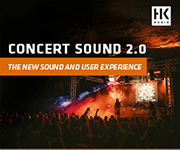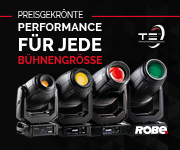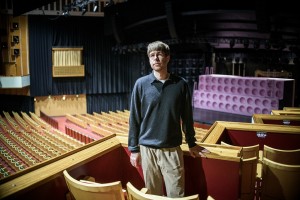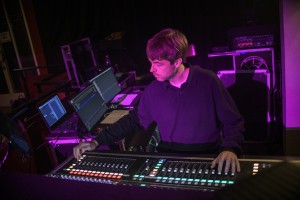Aktuelle News & Schlagzeilen
“We Will Rock You” Denmark uses DiGiCo
The “We Will Rock You” musical is a worldwide success and, since opening in London in 2002, numerous versions have been staged in every corner of the globe. For the most recent version in Denmark, sound designer and Head of Sound, Magnus Hansen (pictured), has made full use of the DiGiCo SD7 T console personalisation.
The new Danish translation of “We Will Rock You” opened in the Tivoli Concert Hall in Copenhagen ahead of a nationwide tour, and is produced by Lion Entertainment. The DiGiCo SD7 T at front-of-house is accompanied by a Quantum 338 and Klang at the monitor position, and SD7 T in the redundant mix room, all supplied by DiGiCo dealer Lydfabrikken.
The show is renowned for its fast-paced scenes, with over twenty Queen hits featured throughout. There are twenty people in the cast and five in the band, twenty IEM channels, sixty mic channels, wireless MIDI, wireless cameras, plus sound effects, mixing and timing of cues for the engineers to concentrate on. The band are located in two huge boxes that move around the stage, with musicians performing wirelessly.
There are three show staff - Lukas Ockelmann, Oliver Svensson and Tobias Vohnsen - accompanied for the rehearsal period by Frank Grønbæk in the redundant mix room, Alistair Kerslake on monitors, and supported by sound designer Magnus Hansen. By adding extended automation to the basic audio-structure at front-of-house, the sound team have been able to refine the mix, ensuring that FOH engineer Lukas Ockelmann is free to connect with the cast and band on stage.
“We had just eleven days on location with full technical and creative support to assemble the whole show, including previews”, says Magnus Hansen. “We wanted to find a way to really use that time effectively, not just to prepare everything technically, but to maximise our creative time with the rest of the design team. We were looking at the Snapshot and Macro functionality of the consoles and realised that if we had a whole redundant system in another room, we could record sections of the show and work on the mix separately, but simultaneously.”
“While Lukas was mixing and cueing rehearsals live, Frank was mixing the songs in a separate room”, he continues. “I was able to keep a full overview and make final adjustments to streamline the design. Once rehearsals were over for each day, we merged the show files and then built on this hard work each day.” Having worked with Lion Productions for almost a decade, Hansen has developed a strong relationship with the rest of the team.
“It is very important to understand that we are aiming for a high level of detail in the mix”, he furthers. “With this method, the whole backbone of the mix is programmed in. We can utilise the Snapshots to pre-programme tiny changes in reverbs, effects or dynamics, which means Lukas can really focus on riding the faders like an instrument, shaping the natural dynamics in real time. On average, we have about twenty Snapshots per song, but it is not 100 percent, fingers still work a lot on the faders. But now, movements are comfortable, in both the loudest and quietest parts.”
The Snapshots are triggered automatically via timecode, so Ockelmann can trust that the changes are happening exactly when they are needed, while still maintaining control of the overall mix. In order to alert engineers to a long sequence of automation, the team have also programmed colour-coded changes to avoid accidental button pushes. When a sequence is in progress, the Snapshot background will show in red, and then return to normal colouring once the sequence has completed.
The team are also taking advantage of the text formatting, changing the typeface to bold or italic, depending on the type of cue. “For example, we can use blue-italic for MIDI cues, thin type lower-case for dialogue, and bold caps lock text for songs”, says Ockelmann.
(Photos: DiGiCo)
SCHLAGZEILEN
news archiv
suche
© 1999 - 2025 Entertainment Technology Press Limited News Stories









